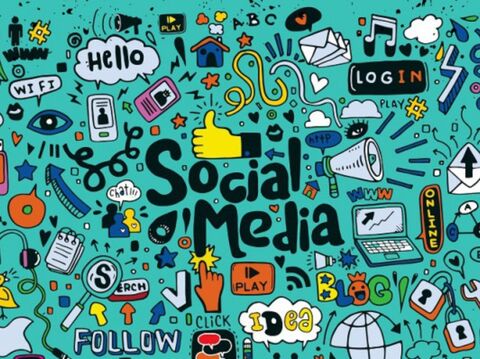Best 15 Social Media Scheduling Platforms for Small Businesses in 2025
.webp)
Remember when posting to Facebook and Instagram meant opening the app five times a day, hoping you'd catch your audience at the right moment? Those days feel prehistoric now.
In 2025, a bunch of social media tools are exploding. With 5.41 billion social media users globally, brands can't afford to wing their posting schedule. The average Indian spends 2 hours 28 minutes daily on social media, but they're not online at the same time. That's where social media scheduling tools turn this from chaos into strategy.
However, choosing the wrong scheduler costs you more than time. It costs engagement, consistency, and ultimately, revenue. With thousands of brands competing on marketplaces and Instagram's ad reach hitting millions of users, you need a tool that doesn't just post content but amplifies it.
We’ve curated a list of 15 social media scheduling tools that actually deliver results on the top social media platforms.
Quick comparison of 15 social media scheduling tools
| Tool | Free plan | Best for | Standout feature | Video support |
|---|---|---|---|---|
| Buffer | ✓ (3 channels) | Simple scheduling | AI post ideas | ✓ |
| Hootsuite | ✗ | Enterprise governance | Unified inbox | ✓ |
| Sprout Social | ✗ | Analytics teams | Optimal send times | ✓ |
| SocialBee | ✗ | Evergreen content | Category queues | ✓ |
| Later | ✓ (limited) | Visual planning | Instagram grid | ✓ |
| Loomly | ✗ | Brand approvals | Post mockups | ✓ |
| Metricool | ✓ | Creators & SMBs | Competitor tracking | ✓ |
| Agorapulse | ✗ | Agencies | ROI reporting | ✓ |
| Sendible | ✗ | Multi-brand management | Client dashboards | ✓ |
| SocialPilot | ✗ | Budget teams | Bulk CSV upload | ✓ |
| ContentStudio | ✗ | AI content | Curation feeds | ✓ |
| Publer | ✓ (limited) | Automation | Auto-recycling | ✓ |
| Vista Social | ✗ | Small teams | Review management | ✓ |
| Planable | ✗ | Collaboration | Client previews | ✗ |
| Meta Business Suite | ✓ | Facebook/Instagram only | Free forever | ✓ |
What users want from a social media scheduler?
The game has changed. Basic scheduling doesn't cut it anymore; these tools need to offer social media tips and suggestions.
Today's social media scheduling tools need to auto-publish to Instagram Reels, YouTube Shorts, and Threads - without you lifting a finger.
They should suggest optimal posting times using AI. And they must provide analytics that prove ROI to your CFO, not vanity metrics that look pretty but mean nothing.
Pain points for founders, CMOs and growth teams
- Manual posting requires 6-8 hours of your time weekly. Worse, inconsistent posting kills your organic reach. When you disappear for three days, algorithms punish you for weeks.
- Fragmented tools make everything harder. One platform for Instagram, another for LinkedIn, a third for analytics. Your team wastes hours copying content across apps, only to miss deadlines.
- Limited analytics leave you guessing. Which posts drove website traffic? What's your cost per engagement? Without clear answers, you're burning budget on content that doesn't convert.
Must-have capabilities in 2025
Modern social media management tools should handle short-form video natively. That means Instagram Reels with cover selection, and YouTube Shorts - all scheduled from one calendar. No workarounds, no manual uploads.
AI assistance isn't optional anymore. Caption variations, hashtag suggestions, image generation - these features save hours while maintaining brand voice. The best social media automation tools suggest posting times based on your audience's actual behaviour.
Approval workflows keep brands compliant. Multi-level approvals with comment threads reduce email chains. Role-based access ensures junior teammates can draft content without accidentally posting to 500K followers. And UTM tracking connects social activity to revenue, closing the loop between marketing spend and business results.
15 best social media scheduling tools in 2025 (free & paid)
We’ve reviewed hundreds of the best social media management tools, and here are 15 that balance power, usability, and value.
1. Buffer
Buffer nails the basics while keeping pricing transparent. The platform's clean calendar view makes scheduling feel effortless. AI-powered post ideas help fill your queue when creativity runs dry, and mobile apps let you schedule on the go.
The free plan includes three channels and 10 scheduled posts per channel. That's genuinely useful for solo founders testing product-market fit. Paid plans remove caps with a fair-use ceiling of 5,000 posts per channel - more than enough for even aggressive posting schedules.
Key features:
- Multi-platform planner
- AI caption assist
- Best-time suggestions
- Link-in-bio builder
- Unlimited scheduling on paid plans
- iOS and Android apps
Pros:
- Intuitive interface means zero learning curve
- Quick onboarding gets you posting in minutes
- Generous free tier beats most competitors
- Unlimited scheduling on Essentials and Team plans.
Cons:
- Advanced approvals require workarounds or additional tools
- Analytics depth trails enterprise suites
- Governance features remain lighter than platforms built for compliance-heavy industries.
2. Hootsuite
When compliance matters, Hootsuite delivers. The platform handles Instagram, Facebook, X, YouTube, Pinterest, and Threads from a unified dashboard.
Bulk scheduling, role permissions, and a unified inbox create operational control that legal and brand teams demand.
AI assistance writes captions, suggests images, and recommends optimal posting times. The app connects to CRMs, data analytics tools, and project management platforms.
Key features:
- Bulk scheduling
- Role/permission controls
- Unified inbox
- AI assistant
- Best-time recommendations
- Broad channel coverage, including newer platforms
Pros:
- Compliance-ready workflows satisfy enterprise requirements
- Reporting depth impresses C-suite stakeholders
- Large app ecosystem integrates with existing martech stacks
- Mature governance handles multi-team coordination seamlessly
Cons:
- Pricing exceeds SMB budgets
- Steeper learning curve delays team adoption
- Feature richness can overwhelm smaller teams that need simplicity over depth.
3. Sprout Social
Sprout Social built its reputation on industry-leading analytics. The platform's "Optimal Send Times" feature schedules posts when your specific audience is most active, not when generic reports say users scroll.
The Smart Inbox consolidates conversations, making community management actually manageable.
Multi-profile and tag-based reporting turns raw data into executive-ready insights. If your CMO demands proof of social ROI, Sprout delivers the receipts
Key features:
- Optimal send times in composer
- Multi-profile reporting
- Workflow approvals
- Social listening add-on
- Tag-based analytics
- Custom report builder
Pros:
- Deep, executive-ready reports justify budget allocation
- Dependable workflows reduce operational friction
- Strong support teams respond fast
- Data visualisation impresses stakeholders who make funding decisions
Cons:
- Premium pricing
- Some capabilities require higher tiers or add-ons
- Mid-market teams may find entry costs steep versus the value delivered initially
4. SocialBee
SocialBee excels at keeping feeds consistently active with minimal effort. Content categories let you organise posts by type - promotional, educational, or curated - and then schedule each category on different cadences.
Evergreen queues automatically recycle your best content, extracting maximum value from every piece.
Unlimited post variations mean you can A/B test messaging without creating separate posts. Canva integration and AI captions speed up content creation. Video thumbnail selection ensures visual consistency across platforms.
Key features:
- Evergreen post recycling
- Unlimited variations
- Canva integration
- AI caption generator
- Content categories
- RSS feed automation
- Video thumbnail picker
Pros:
- Excellent for creators needing an always-on presence
- Automation saves hours weekly
- Category system brings order to content chaos
- Pricing remains competitive for the feature depth offered
Cons:
- Lighter on enterprise governance versus full suites
- Analytics and listening features trail dedicated platforms
- Team collaboration tools exist, but lack the sophistication of agency-focused alternatives
5. Later
Later's visual planner makes Instagram scheduling feel native. Drag-and-drop calendar previews exactly how your feed will look.
First-comment tools and hashtag managers optimise reach. The link-in-bio product connects posts to conversions, closing the loop between awareness and action.
Content ideas and trend alerts keep your calendar full. Pinterest integration taps into underutilised discovery traffic.
Key features:
- Drag-and-drop visual calendar
- First-comment scheduling
- Hashtag tools
- Link-in-bio pages
- Content ideas dashboard
Pros:
- Creator-friendly UX requires no training
- Perfect for Instagram and Meta-focused strategies
- Visual grid preview prevents feed aesthetic disasters
- Link-in-bio drives traffic to revenue-generating pages
Cons:
- Reporting depth and enterprise governance lag behind full management suites
- Feature set optimises for visual platforms, potentially limiting multi-channel strategies
- Advanced analytics require higher tiers
6. Loomly
Loomly solves approval bottlenecks with polished post mockups and multi-step workflows. Custom approval chains with comments and notifications replace scattered email threads.
Exportable calendars keep external partners informed. Slack and Teams alerts notify approvers instantly. Role-based permissions prevent unauthorised publishing while enabling collaborative creation.
Key features:
- Custom multi-step approvals
- Post mockups
- Comments and notifications
- Slack/Teams integration
- Scheduling automation
Pros:
- Clean collaboration reduces approval friction
- Post previews prevent formatting surprises
- Stakeholder clarity minimises last-minute changes
- Notification system keeps workflows moving
Cons:
- Social inbox depth trails platforms built around community management
- Advanced analytics may require higher tiers or companion tools
- Feature focus remains approval-centric versus full-suite capabilities
7. Metricool
Metricool packs enterprise features into creator-friendly pricing. Official partner badges prove platform trust. The ads planner connects organic and paid strategies.
Drag-and-drop scheduling with auto-publish eliminates manual posting. Best-time heatmaps visualise when your audience engages. Competitor tracking reveals content gaps.
Key features:
- Drag-and-drop planner
- Auto-publish
- Best-time heatmaps
- Competitor tracking
- Hashtag finder
- Ads planner
- Bluesky support
Pros:
- Excellent dashboards at accessible pricing
- Wide channel coverage including emerging platforms
- Strong creator and SMB fit
- Analytics depth impresses for the price point
Cons:
- Team and approval workflows remain more basic than enterprise suites
- API-driven limits vary by network
- Learning curve exists for full feature utilisation
8. Agorapulse
Agorapulse built its platform for agencies managing multiple brands. Shared calendars organise client content without mixing accounts. Approval flows with comments streamline sign-offs. Polished client reports showcase results without hours of manual work.
ROI reporting connects social activity to website outcomes using Google Analytics data. The unified inbox consolidates messages across platforms. Scalable plans accommodate growth from solo consultant to agency team.
Key features:
- Shared multi-client calendars
- Approval workflows
- Unified inbox
- ROI reporting with GA integration
- Client-ready reports
Pros:
- Client-ready reporting saves hours monthly
- Strong inbox and collaboration features
- Helpful support team responds quickly
- Pricing scales reasonably with team growth
Cons:
- Per-seat and per-brand costs add up for larger agencies
- Onboarding depth can overwhelm non-specialists initially
- Some advanced features require higher tiers
9. Sendible
Sendible handles client juggling with dashboards, content libraries, and streamlined approvals. Multi-brand calendars organise content without confusion. Approval and feedback workflows keep clients in the loop without flooding inboxes.
Canva integration accelerates creative production. Trend resources and report templates speed up common tasks. Scheduling optimisation suggests the best posting times per brand.
Key features:
- Multi-brand calendar
- Approval workflows
- Canva integration
- Content libraries
- Client collaboration tools
Pros:
- Agency-centric design reduces client management friction
- Efficient brand switching saves time
- Solid collaboration features
- Content libraries enable asset reuse
Cons:
- Interface can feel dense initially
- Analytics depth trails premium enterprise tools
- Learning curve exists for maximising all features effectively
10. SocialPilot
SocialPilot delivers value without compromising capability. Bulk upload via CSV handles 500+ posts at once. Team roles, approvals, and an integrated inbox appear at mid-tier plans.
AI copy assistance speeds caption writing. Content library organises assets. Manager approvals prevent unauthorised publishing. Affordable seat and account pricing scales with small teams.
Key features:
- Bulk CSV scheduling (500+ posts)
- AI caption help
- Content library
- Manager approvals
- Analytics dashboard
Pros:
- Aggressive pricing benefits budget-conscious teams
- Easy onboarding reduces time-to-value
- Strong bulk tools handle high-volume posting
- Feature set punches above price point
Cons:
- Advanced listening capabilities absent
- Deep enterprise analytics trail specialised platforms
- Feature depth focuses on core scheduling versus full-suite management
11. ContentStudio
ContentStudio combines unified scheduling with strong AI writing and curation. Discovery feeds surface trending content by topic. AI writing generates captions, suggests hashtags, and ideates post concepts when your team hits creative walls.
Approval workflows include a no-login client review, where stakeholders can preview content without requiring platform access. Workspaces organise multi-brand management. White-labeling supports agency branding.
Key features:
- AI content generation
- Discovery curation feeds
- Unified composer and calendar
- Approval workflow
Pros:
- Great for filling calendars efficiently
- Automation scales agency operations
- Content curation saves research time
- AI assistance maintains posting consistency.
Cons:
- Curation quality requires editorial oversight
- Some module learning curves exist
- Feature richness can overwhelm teams seeking simple scheduling
12. Publer
Publer prioritises speed, automation, and creator needs. Auto-recycling extends evergreen content value. Auto-schedule places posts at optimal times without manual selection.
Link-in-bio pages convert profile visitors. Follow-up comments boost engagement systematically.
Media previews show exactly how posts will appear across platforms. The interface remains clean despite feature depth. Affordable pricing fits solo creators and small teams.
Key features:
- Auto-recycling
- Auto-schedule
- Link-in-bio landing pages
- Follow-up comments
- Media previews
Pros:
- Fast, affordable, practical for solo users
- Automation saves hours weekly
- No-nonsense interface
- Mobile apps enable on-the-go management
Cons:
- Reporting and governance remain basic
- Advanced team features limited
- Best suited for individual creators versus agencies managing multiple brands
13. Vista Social
Vista Social covers publish, engage (inbox), reviews, and UGC sourcing in one modern platform. The visual calendar organises content intuitively. Review management consolidates customer feedback. Social inbox unifies conversations.
Vista Page link-in-bio creates microsites connecting social traffic to conversions. UGC sourcing and collaboration tools activate customer content. Quick product iteration ships requested features fast.
Key features:
- Visual calendar
- Review management
- Social inbox
- Link-in-bio microsites
- UGC sourcing
Pros:
- Strong value proposition
- Quick product iteration responds to user needs
- Breadth suits small teams needing multiple capabilities
- Interface feels contemporary
Cons:
- Smaller ecosystem than legacy platforms
- Advanced reporting still maturing
- Enterprise features trail established competitors
14. Planable
Planable focuses laser-sharp on collaboration. Pixel-perfect post mockups show stakeholders exactly how content will appear. In-context comments and annotations eliminate confusion. Multi-level approvals handle complex sign-off chains.
Easy client review links allow external stakeholders to preview content without platform access. Real-time collaboration means teams can co-edit simultaneously. Often paired with other tools for analytics and inbox management.
Key features:
- Real-time collaboration
- In-context comments
- Post mockups
- Multi-tier approvals
Pros:
- Clients love visual previews
- Frictionless sign-off accelerates publishing
- Collaboration features reduce approval cycles
- Interface designed for simplicity
Cons:
- Limited analytics and inbox - may need companion tools
- Feature focus remains approval-centric versus full-suite management
- Best as collaboration layer, not standalone solution
15. Meta Business Suite (free)
Meta's native tool handles Facebook and Instagram scheduling, stories, and Reels from desktop. The built-in inbox manages comments and messages in one place. Meta is unifying video as "Reels" across Facebook in 2025, streamlining video workflows.
Basic insights track post performance. Free forever with no hidden costs. Closest integration to Meta's APIs ensures feature parity. Ideal for brands focused primarily on Instagram and Facebook.
Key features:
- Schedule posts, stories, and reels
- Desktop publishing
- Unified inbox
- Basic insights
Pros:
- Completely free removes budget barriers
- Closest to Meta's APIs ensures reliable publishing
- Ideal for IG and FB-focused strategies
- No learning curve - interface matches apps
Cons:
- Meta-only - doesn't support cross-platform workflows
- Lacks advanced multi-brand governance
- No third-party integrations
- Analytics remain basic versus dedicated tools
Which social media scheduler fits which team persona
Choosing the wrong social media scheduling tools wastes time and money. Match your team's reality to the platform's strengths.
Solo founders & creators (lean budgets, fast setup)
Prioritise low cost and plug-and-play UX. Buffer's free plan, Publer's automation, or Meta Business Suite give you scheduling power without subscription fees.
Mobile-first workflows let you manage content between meetings. AI in social media helps and evergreen queues keep posting consistently when client work overwhelms your calendar.
VC-backed startups (scale-ready, collaboration, analytics)
Choose platforms with role-based access from day one. Approval workflows prevent embarrassing mishaps as headcount scales. Clear growth analytics prove product-market fit to investors - track follower quality.
Integrations matter more at this stage. Your social media management tools should connect to your CRM, analytics stack, and project management platform. API reliability prevents broken workflows when platforms change authentication.
Mid-market marketing teams (approvals, workload balance)
Seek strong calendars, multi-stage approvals, and task routing. Reporting must summarise for leadership (high-level KPIs) while drilling down for managers (campaign-specific metrics). Content libraries enable asset reuse across campaigns.
Team collaboration features reduce bottlenecks. Assigning posts to specific teammates with deadline tracking keeps everyone accountable. Comment threads on drafts replace endless email chains and Slack messages.
Agencies (client reporting, white-label needs)
Favour shared calendars, client portals, and branded reports. Seat pricing and profile limits must accommodate multi-brand realities - per-client costs add up fast. White-label reporting maintains your agency brand in client presentations.
Client review without platform access streamlines approvals. Stakeholders preview content via links, eliminating training overhead. Workspaces separate client assets, preventing cross-contamination.
Enterprises (security, governance, audit trails)
Demand SSO, granular permissions, and audit logs. Compliance features aren't negotiable - your legal team needs tracking for who published what and when. Vendor stability matters - platform longevity and support SLAs protect against disruption.
Advanced governance controls what teams can post where. Role-based access prevents regional marketing from publishing global brand content. Integration depth connects social to enterprise systems already in place.
Summing up: Best social media scheduling tools
The right social media scheduling tools multiply your team's impact. Whether you choose Buffer's simplicity, Hootsuite's governance, or SocialBee's automation, the best tool is the one your team actually uses.
Start with clear requirements. How many channels? What's your budget? Do you need approvals? Then, trial 2-3 finalists before committing. Most platforms offer 14-day trials - enough time to test real workflows, not just demo features.
Need help choosing the right tool for your brand's unique needs? At GrowthJockey - a full-stack venture builder, we've helped 25+ ventures scale their social presence using data-driven strategies and the right martech stack.
Our team diagnoses your current workflow, designs a custom social strategy, and builds the operational systems that turn followers into customers.
FAQs on social media scheduling tools
Q1. What is the best scheduling tool for social media?
Buffer offers the best free tier (3 channels, 10 posts each), while Hootsuite and Sprout Social lead for enterprise needs. Choose based on your budget, team size, and required features.
Q2. What is the 5 5 5 rule for social media?
The 5-5-5 rule suggests posting 5 times weekly, engaging with 5 posts daily, and spending 5 minutes on community interaction - though optimal frequency varies by platform and audience.
Q3. What are the 7 C's of social media?
Content, Community, Conversation, Capital (social proof), Culture, Collaboration, and Conversion - the seven pillars of effective social media marketing tools strategy in 2025.
Q4. What is the 5-3-2 rule for social media?
For every 10 posts: 5 should be curated content from others, 3 should be original content, and 2 can be promotional - maintaining a balance between value and selling.








